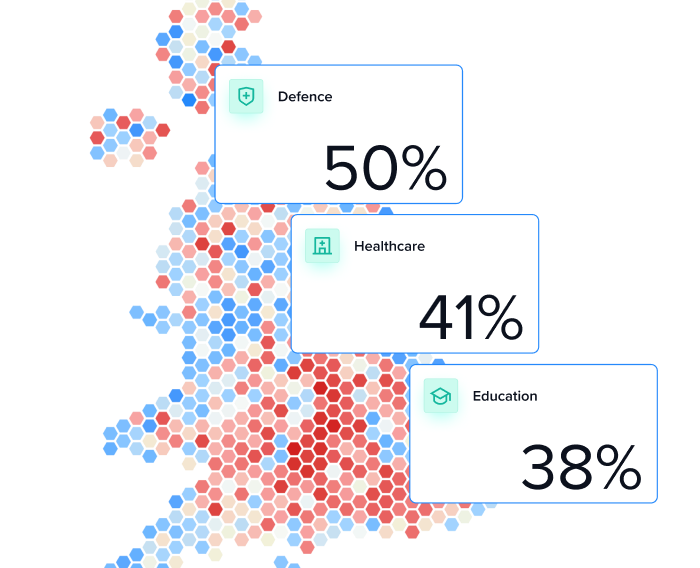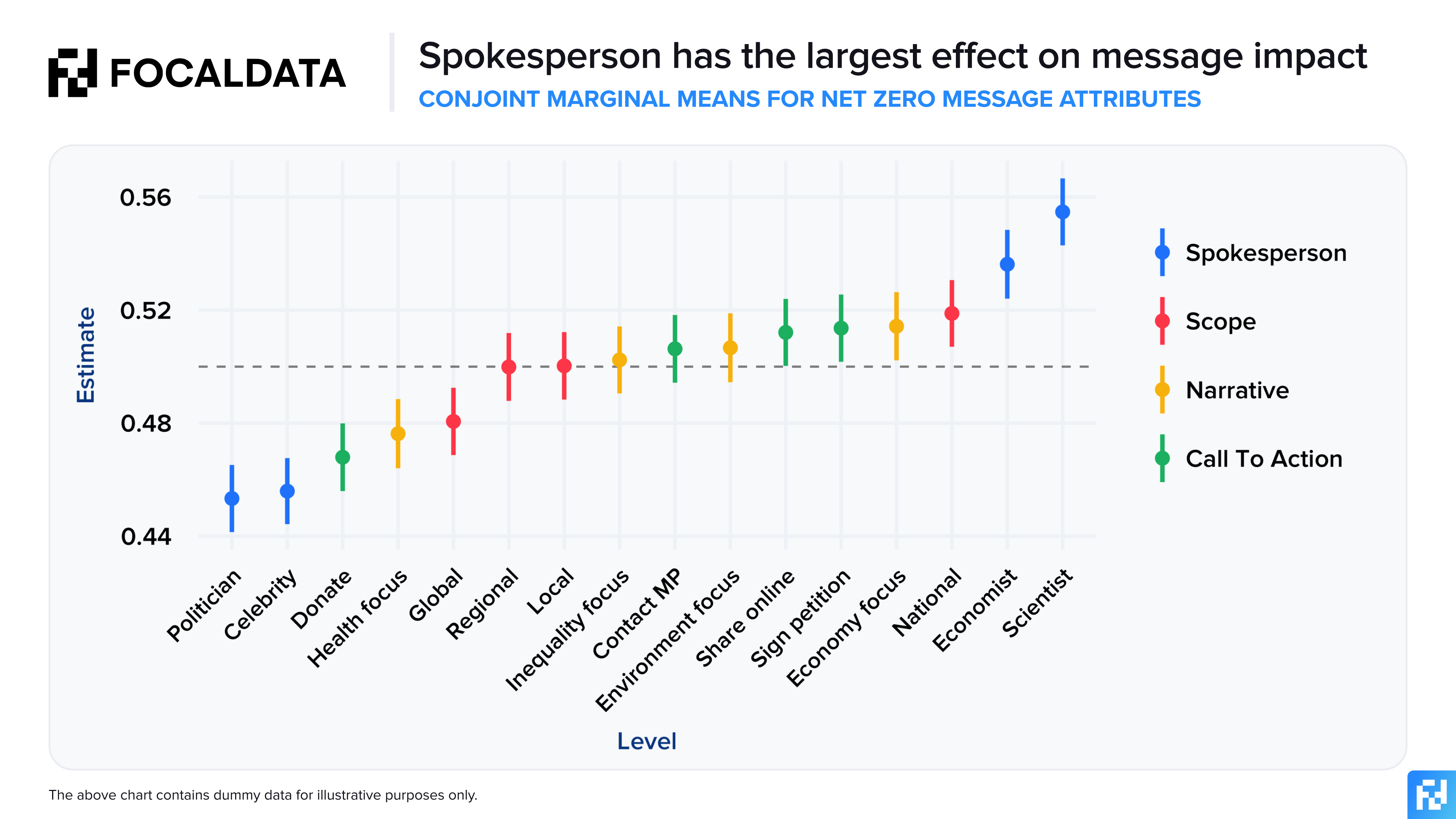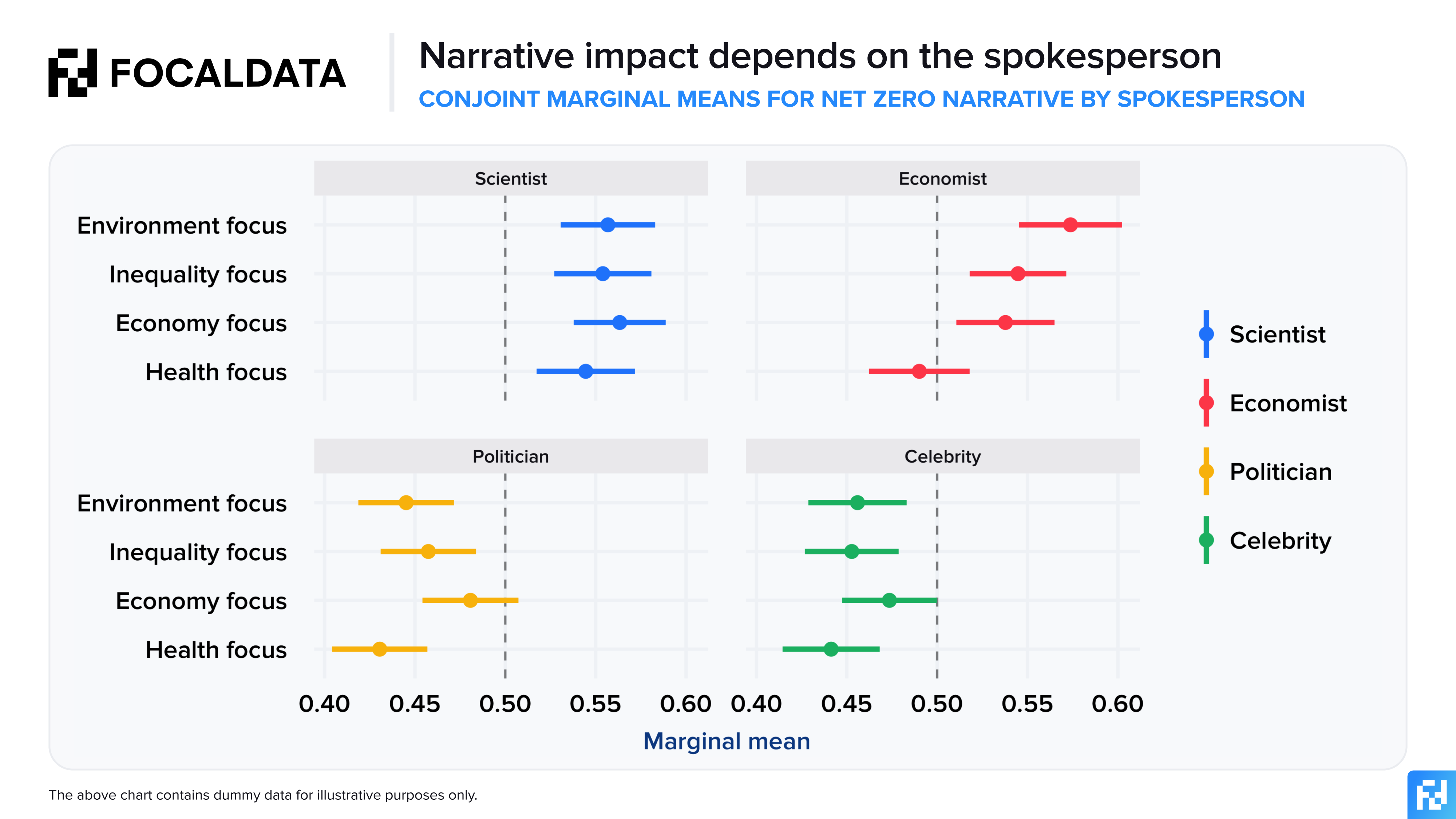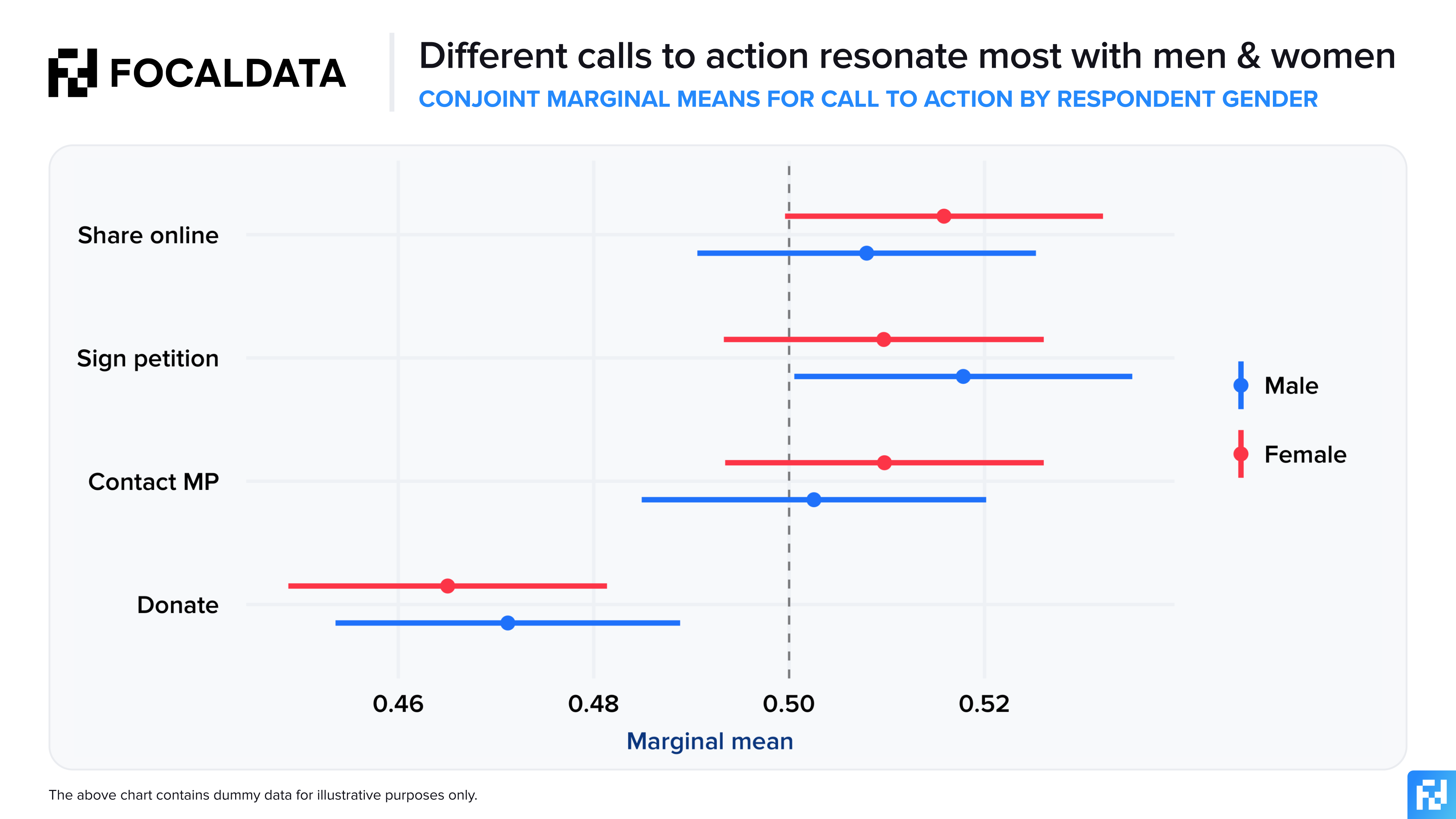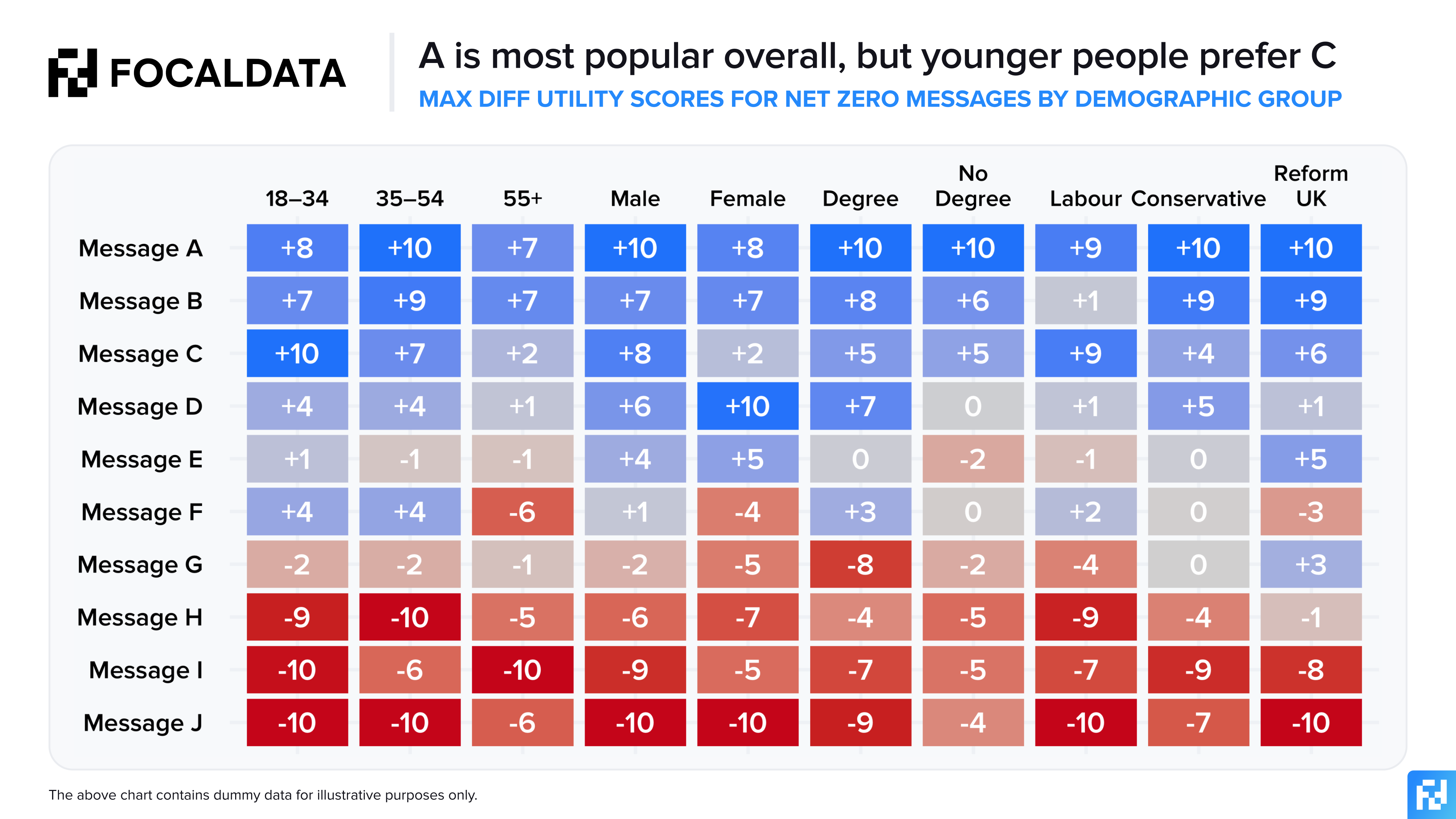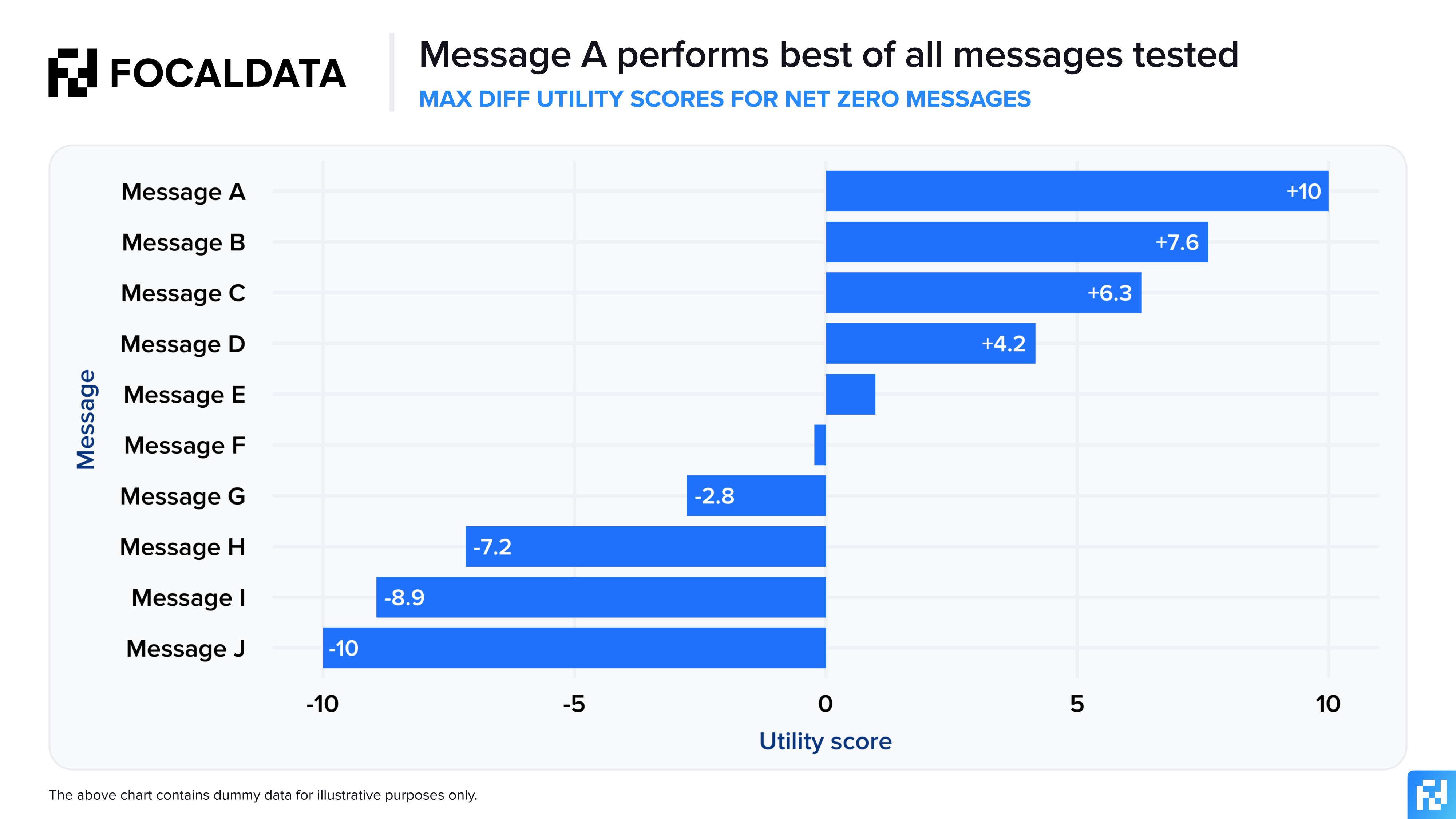Blog/Product
Conjoint, MaxDiff, Text Highlighter: Advanced tools for designing an effective campaign
Designing a successful campaign is difficult. Campaign directors face a dizzying array of decisions about the best narrative, tone, medium, and messenger for persuading their target audience. Too often, these decisions are driven by instinct rather than evidence, which makes it a mystery why some campaigns go gangbusters and others fall flat. That’s why we have added three new tools to our platform which are ideal for testing campaign messages. Using Conjoint, MaxDiff, and Text Highlight, you can transform your creative concept into a structured campaign that is proven to be effective before it even launches.
How do these tools work?
Conjoint experiments present survey respondents with a series of choices, where each option is composed of a randomised configuration of features. This set-up lets us work out the ideal combination of features which interact to produce the most compelling package. It’s a bit like putting together the perfect outfit. Even a limited wardrobe of shoes, trousers, tops, and accessories contains hundreds of possible combinations, and picking one involves figuring out what looks good, how styles complement each other, and which colours clash.

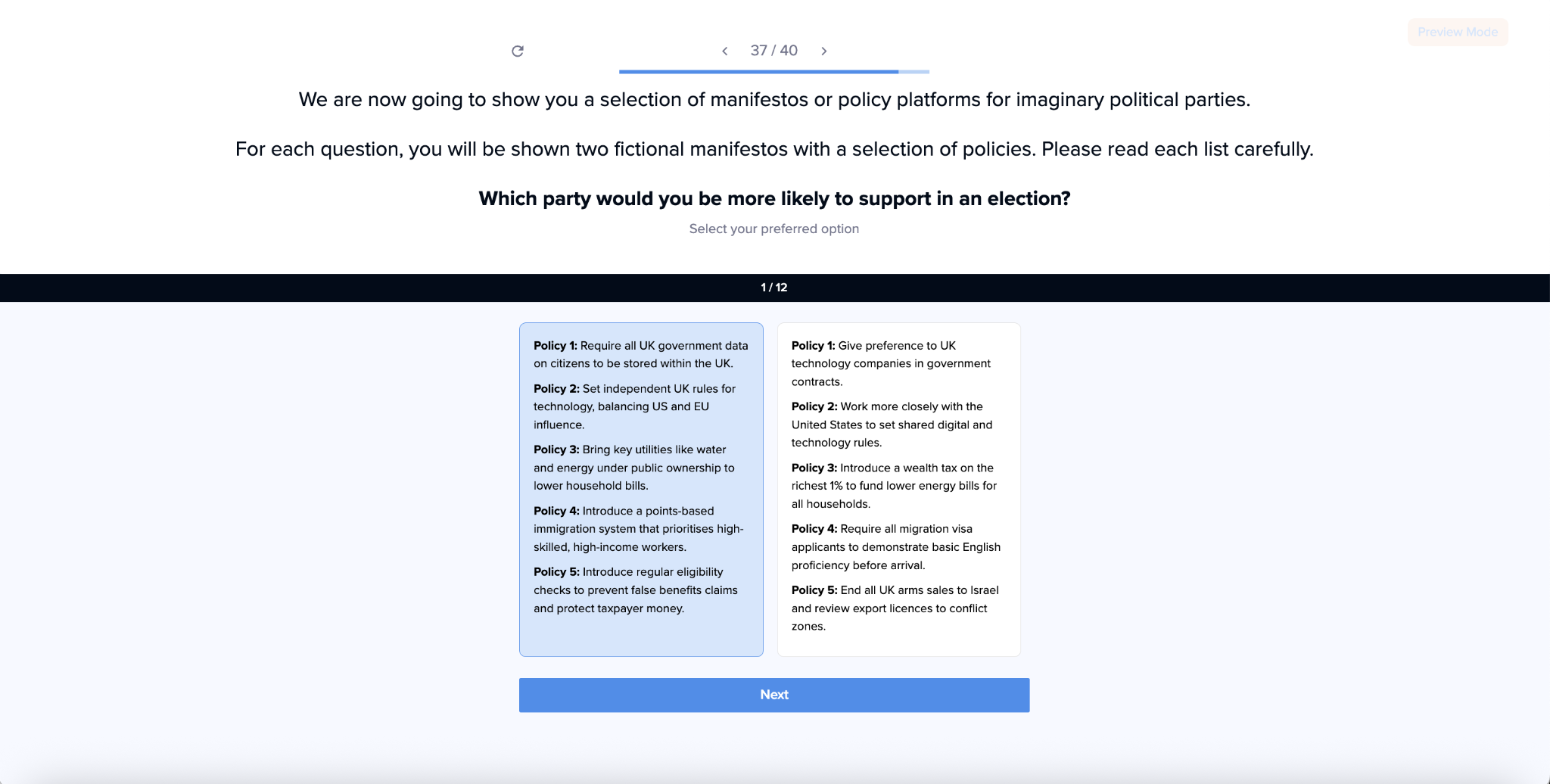
Like Conjoint, MaxDiff experiments ask respondents to make a series of choices. But unlike Conjoint, they see lists of predefined options, and select which they think are the best and worst in each case. The upshot is that we can infer each respondent’s ranking of all options, from most to least preferred. Standard ranking questions on surveys start to become impractical with more than six or seven options, but MaxDiff works effectively with up to 50 options.


While Conjoint and MaxDiff are established techniques used across industry and academia, our final new feature is genuinely novel. We designed the Text Highlight tool to identify exactly what works and what doesn’t in a piece of verbal or written content. Respondents read a short paragraph and highlight words or phrases that stand out. This flexible tool on our platform supports up to four highlight colours based on custom prompts: what respondents like, what they dislike, what they find inspiring, what they find confusing, what makes them cringe, or whatever else you want to measure. Respondents can also add comments, so you understand why certain passages appeal to them – or don’t. The result: immediate insight into the killer lines that sell your message, as well as any red flags that undermine it.
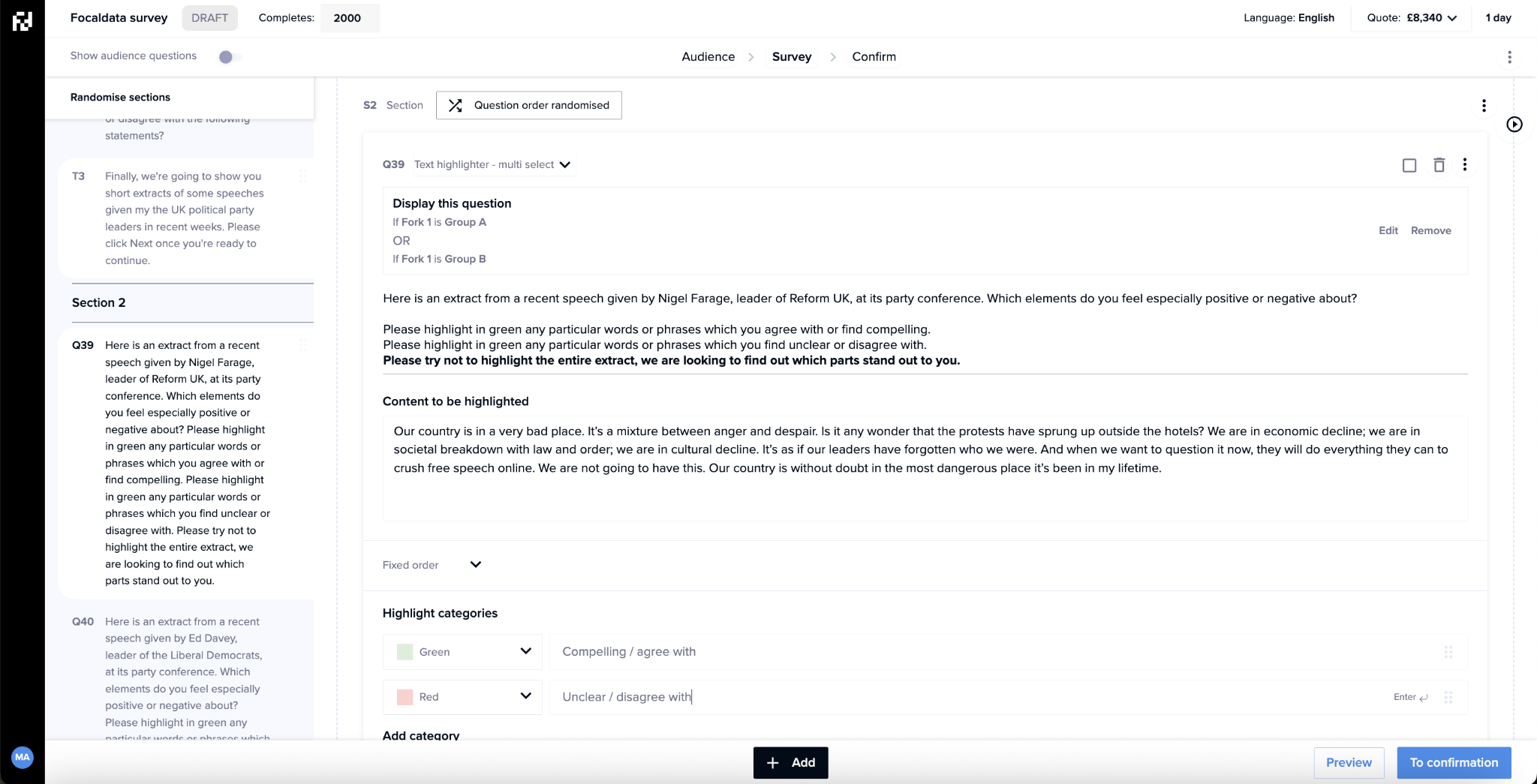
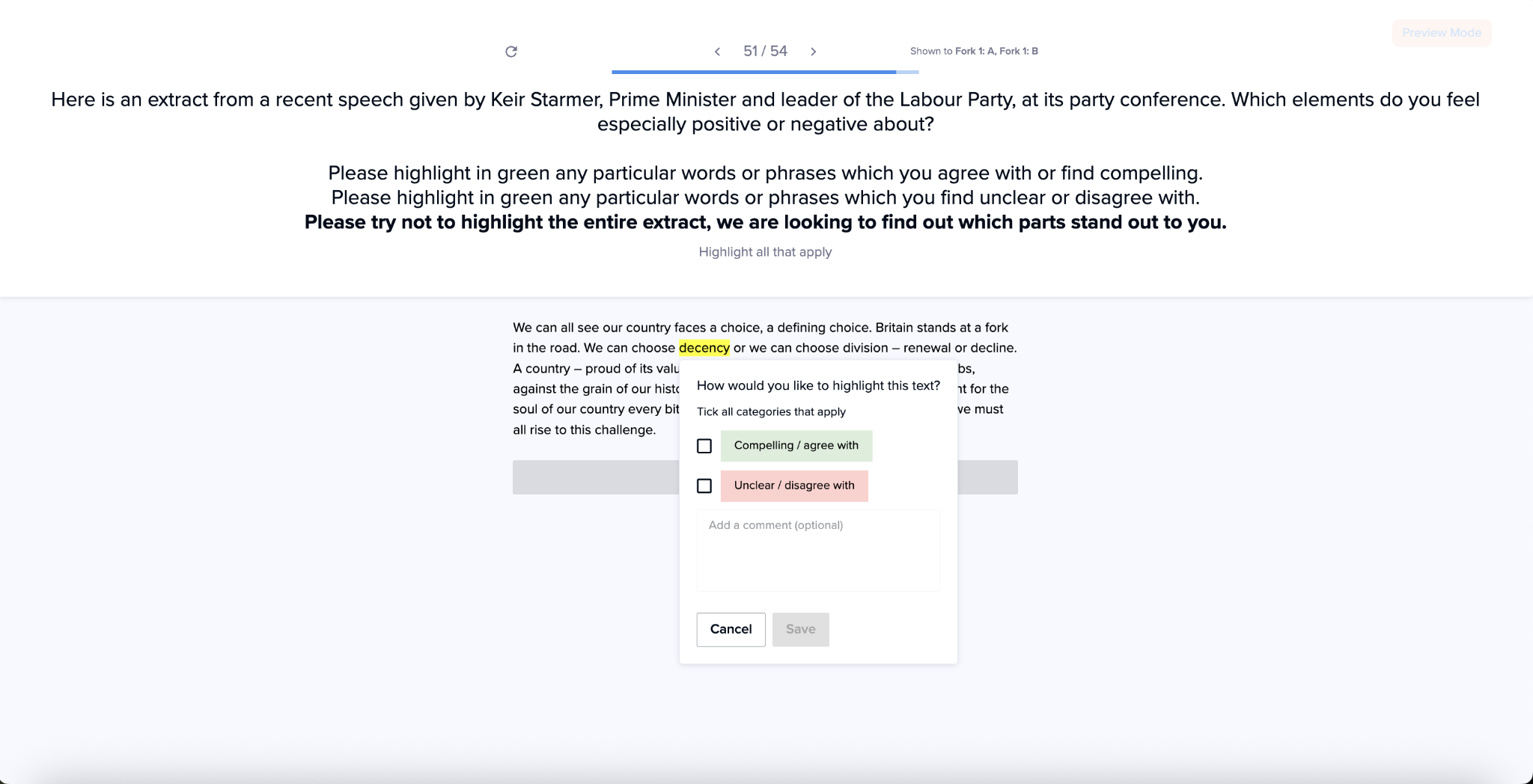
The tools in action: Climate comms case study
To see how these tools can give comms professionals an edge, imagine you are the Director of Campaigns at a sustainability charity. You need to design a campaign to build public support for Net Zero by 2040, ten years ahead of the current target.
In the brainstorming phase, you might have hundreds of ideas, but only a vague hunch about which will work best. Conjoint lets you test them all. By breaking up the components of your campaign into spokesperson, scope, narrative, and call to action, you identify the most promising permutations to test further.
Once you decide on a shortlist of messages, MaxDiff is the ideal set-up to test them against each other. It ranks all potential messages by persuasiveness, both for the general population and for each of your target audiences. You also decide to run a regression analysis which reveals the latent factors – like tone, vocabulary, and sentiment – that make some messages more persuasive than others.
Based on the evidence from the MaxDiff, you are confident that you have selected the best possible message for your campaign. The challenge now is to refine it for maximum impact. You show survey respondents a clip of your chosen spokesperson delivering the message and get them to highlight parts of the script that stand out. This reveals the most impactful lines and lets you catch some technical jargon which confuses viewers.
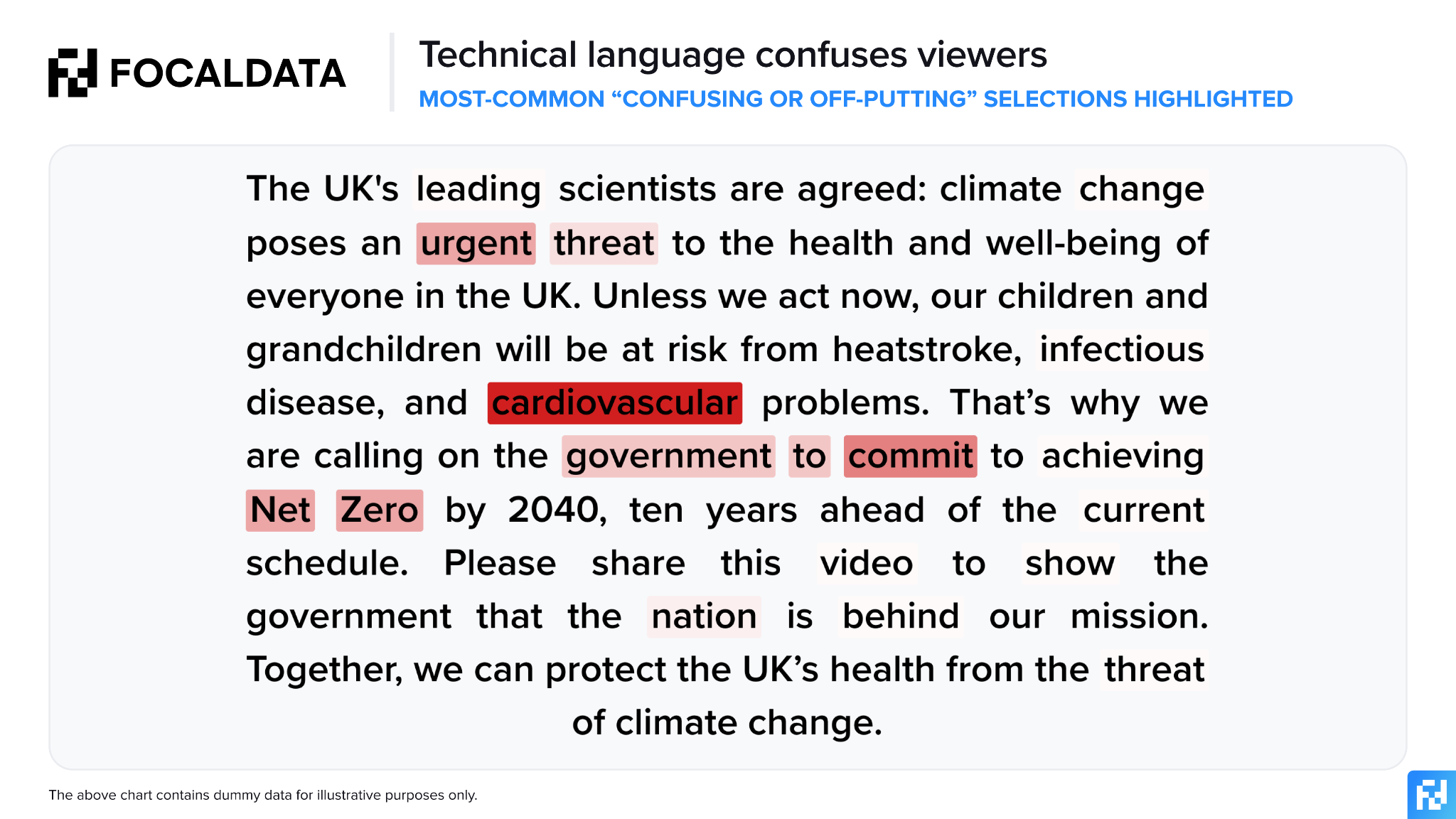
By the time you launch the final edit of the video, you already know the campaign will resonate with your target audience – that’s the reward that comes with data-driven campaign design powered by cutting-edge tools.
If you want to learn more about these techniques and how you can leverage them to achieve your own campaign goals, please get in touch with us here.
